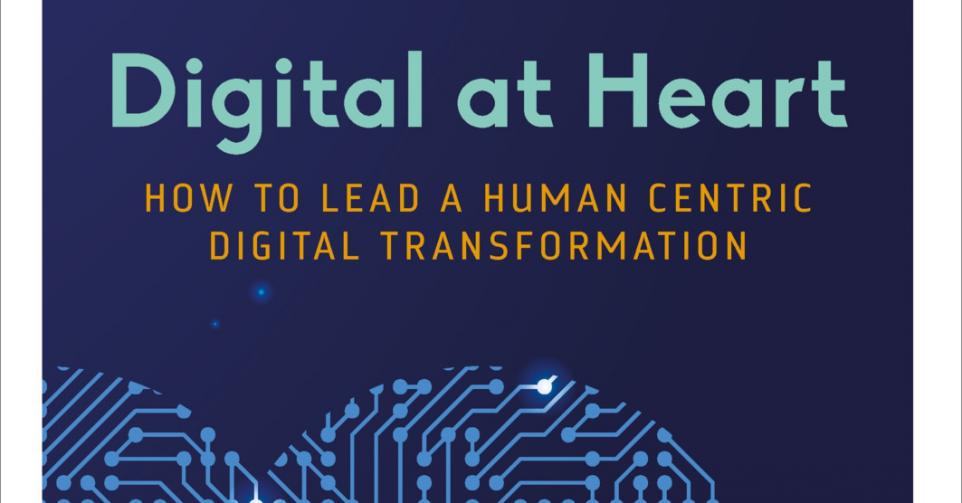Dans leur nouveau livre, les auteurs Karlien Vanderheyden, Ignace Decroix et Stijn Viaene évoquent un changement de cap majeur: fini la transformation classique descendante (‘top-down’), vive le leadership partagé et une transformation axée sur les personnes en misant pleinement sur la technologie.
Le temps presse, et la Belgique risque de passer à côté de ses ambitions numériques. Non pas faute de technologie, mais par manque du leadership nécessaire pour concrétiser la transformation numérique. Tel est le principe du livre ‘Digital at Heart’.
Les auteurs Karlien Vanderheyden, Ignace Decroix et Stijn Viaene préconisent un modèle 4V: quatre rôles de leadership qui, ensemble, s’orientent vers une transformation durable. Les leaders Vigilant, Voyager, Visionary et Vested sont attentifs, apprenants, inspirants et créateurs de liens. Il ne s’agit pas là d’un modèle théorique, mais d’une approche pratique pour concrétiser la transformation sur le lieu de travail, en accordant une attention particulière au dialogue, à la sécurité psychologique et au co-leadership.
Nous vous proposons ici un avant-propos du livre (en anglais).
Turbulence as the 21st century new normal
Disruption has been a recurring phenomenon since the dawn of the industrial age. In his 1892 landmark book Degeneration, physician and social critic Max Nordau wrote that the unnaturally accelerated demand of industrial life offers people little to no breathing space. And while it took several generations to perfect the steam engine to power the first Industrial Revolution, it takes significantly less time to develop and implement digital technologies. To survive today’s business complexity, companies must possess flexibility; they need to routinely explore and exploit opportunities faster than their rivals. This is what we call Organisational Agility
– defined by John Coleman, as “Creating an adaptable organisation with a higher possibility to drive
disruption in society, the industry, and the marketplace […]. It looks like a pattern of constructive collaboration between people with diverse perspectives [and] feels like increased humanity, authenticity, leadership, and engagement, and overall caring more about […] meaningful-shared-purpose, value, understanding needs and wants, out-side-in-thinking, and more.”
Stijn Viaene defines this as follows: “Digital transformation is a process of organisational change that leverages digital technology. It is a response to shifts in an organisation’s business environment driven by a continuous stream of digital opportunities and challenges. We deliberately frame digital transformation not as a tactic, but as a strategic, holistic endeavour – an end-to-end effort that spans the entire value chain and is both inward and outward-looking. Digital technology plays a dual role in the process, as digital transformation is about organisation-wide change both in response to and with the help of digital technologies.” Digital transformation is continuous in nature. It results in successive waves of transformation rather than discrete projects or programs.
A new wave of technologies has arrived while many companies are still struggling to master previous ones. Currently, 91% of organisations are engaged in digital initiatives9, with 71% of organisations aiming to increase their company’s tech investments over the next few years. In the case of specific technologies, such as
chatbots and large language models, up to 85% of organisations expect to invest significantly10. George Westerman, MIT Sloan senior lecturer, and Didier Bonnet, affiliate professor at IMD Business School, discuss how digital transformations become increasingly complex. Whereas 85% of companies underwent a transfor-
mation in the past decade, nearly 74% failed to improve business performance. And approximately half of companies that undertake transformations fail. It’s of little surprise then that 93% of companies consider digital transformation the most important training topic to invest in.
Change: what’s in a name?
Business transformations are often built around structural elements – new processes, facilities, policies, and – of course – technologies. However, author and CEO Timothy R. Clark writes that “Agile’s core technology isn’t technical or mechanical. It’s cultural.”
Change invites hidden fears, anxieties, and insecurities into your company. The author Tony Schwartz sees change as something “[…] where resistance tends to arise – cognitively in the form of fixed beliefs, deeply held assumptions and blind spots; and emotionally, in the form of the fear and insecurity that change engenders. All of this rolls up into our mindset, which reflects how we see the world, what we believe, and how that
makes us feel.” You don’t just need to transform your processes and technologies; as a result, you also need to transform your people. This internal shift – what people think and how they feel – must be a cornerstone of your strategy.
